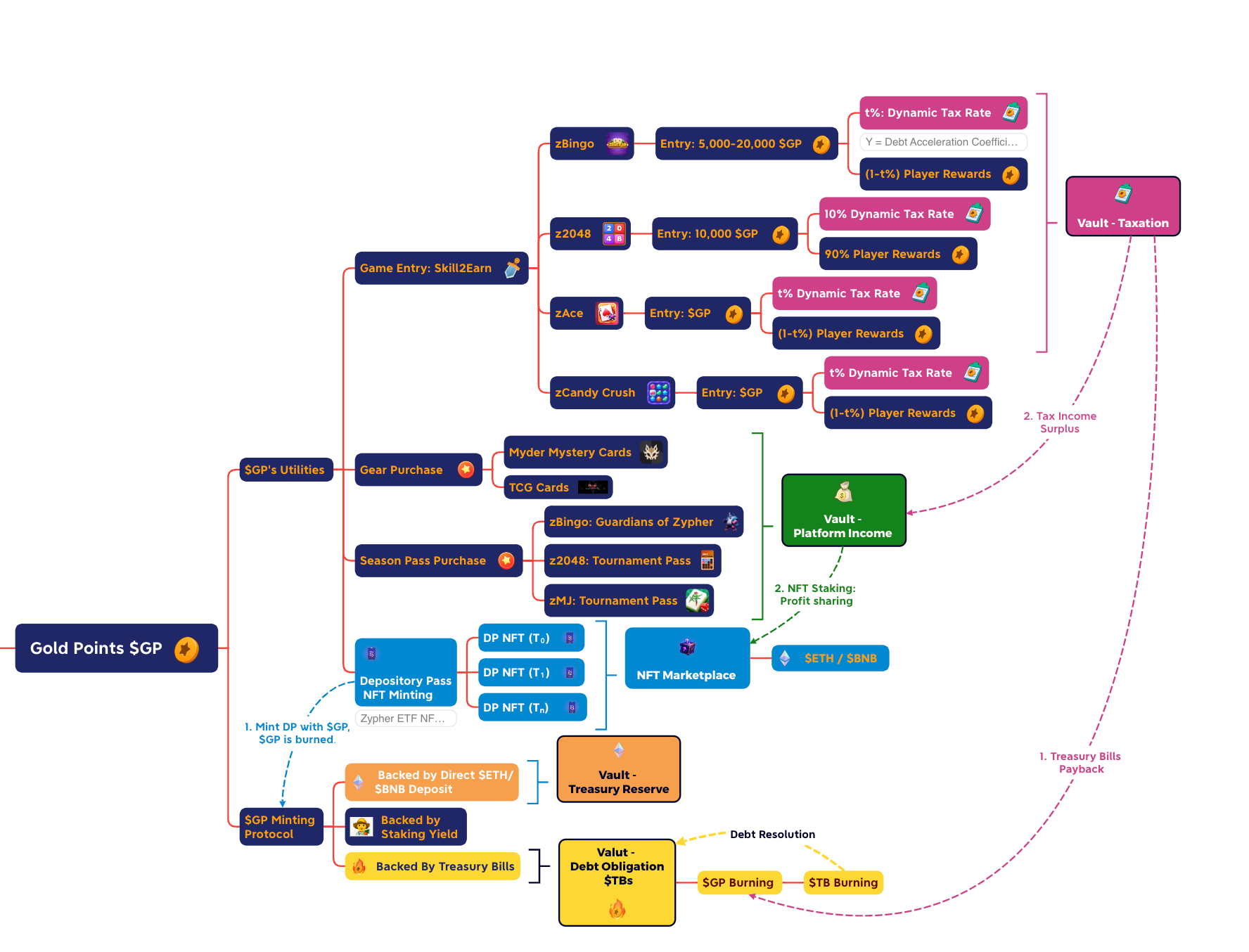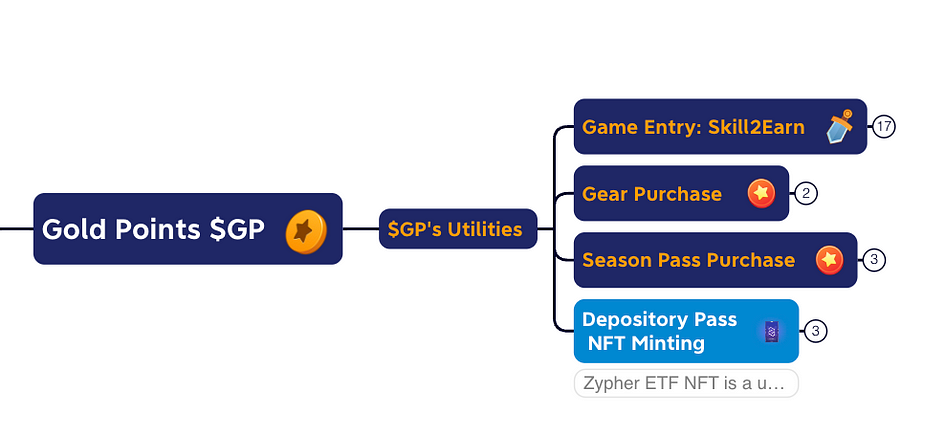
*This document is crafted to assist our players in better understanding the Zypher Games incentives system. If you’d like to delve into more comprehensive details, please refer to the original post. For a closer look on the chart please check out this link.*If you have any questions or feedback, please feel free to reach out to us directly.
I’d like to guide you through the Zypher Game incentive system design. Before delving into the specifics, it’s essential to note that its design aligns with the ethos of the Zypher Games manifesto. While our ultimate goal is to establish a community-owned and financially autonomous metaversal social contract, we recognize that the gaming realm is a microcosm ripe for experimentation — a testing ground for technologies and systems that can redefine society at large.
When formulating the Zypher Games Incentives system, we envisioned it being similar to the economic framework of a nation-state — balanced by monetary and fiscal policies, taxation, and governance. We aim to maximize the collective benefits for both the platform and its players, granting the governance entity a moderate level of authority for effective decision-making and policy enforcement.

The exclusive gaming token facilitating the operations of this system is $Gold Points. These points are pivotal to Zypher’s economic structure, yet they are not governance tokens.
$Gold Points circulate seamlessly throughout the entire Zypher ecosystem, transforming and transitioning between various assets — whether being converted from $ETH, utilized in minting NFTs (and subsequently burned), or allocated into Vaults for diverse objectives. Governed by smart contracts, the flow and circulation of $Gold Points are verifiable, ensuring the utmost integrity. For better visualization, we employ a spectrum of colors to delineate the diverse pathways through which $Gold Points traverse the system: Pink (taxation) Vault, Green (Platform Revenue) Vault, Blue (NFT Marketplace) and Yellow (Debt) Ledger.
$Gold Points mirror money’s basic functions: store of value, unit of account, and medium of exchange.

Let’s now dive into Gold Points’s utilities.
Gold Points can be used to pay the entry fee to initiate a game. Depending on the game chosen, players have an opportunity to reclaim corresponding GPs by outplaying their opponents, a system we’ve coined “Skill-to-Earn”.
Currently, three games are available in production (or pre-production) on the platform built by community developers: zBingo, z2048, and zAce each with different fee mechanisms. In the game Bingo, players might pay an entry of 5,000 Gold Points and claim 8,500 Gold Points if he/she wins the game, earning 3,500 from opponent players. 1,500 Gold Points are reserved as taxation to sustain the platforms’ regular operations. This 15% taxation is a dynamic number and may vary in other games, with all tax proceeds sent to the Pink (taxation) Vault. We’ll delve deeper into the Dynamic Tax Rate in the next section.
For visualization purposes, different colors are used to represent various types of transfers within the system. Pink, denotes all transactions related to taxation. A percentage (t%) corresponding to the tax rate is applied to the entry fees paid by players, and this amount is directed to the (taxation) Vault. The remaining balance is redistributed back to the players as rewards
